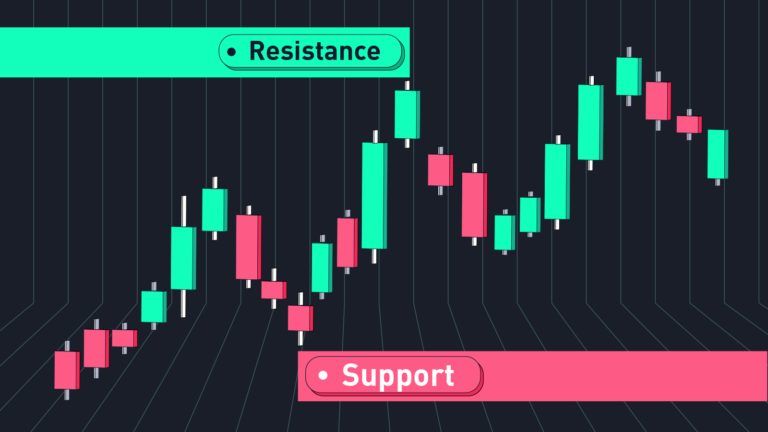
If you’re new to the forex world, the term “technical analysis” might sound a bit intimidating. But don’t worry—it’s actually simpler than it seems! Technical analysis is a cool way to predict price movements by looking at past price data. Among all the concepts in technical analysis, two things are really crucial to understand: support and resistance. Let’s dive into why these are important and how you can use them to trade with more confidence.
What is Technical Analysis in Forex?
Technical analysis is basically the art of reading charts. Yep, you’ll be looking at price charts, using indicators, and trying to figure out where the price might head next. It’s fun because this info can help you decide when to buy or sell. That’s why technical analysis is super important, especially if you want to trade with a clearer direction.
Understanding Support and Resistance
Support and resistance are like key price levels on the chart. Think of support as a floor where the price struggles to drop further, and resistance as a ceiling where the price has a hard time breaking through. When the price gets close to the floor (support), it often bounces back up because of buyers stepping in. On the other hand, when it nears the ceiling (resistance), sellers often push the price down.
Why are Support and Resistance Important?
- Help You Find Entry and Exit Points: Want to know the right time to buy or sell? Support and resistance can be your guide. For example, if the price is near support, it might be a good time to buy. If it’s near resistance, it might be time to sell.
- Indicate Market Trends: Support and resistance can also help you spot market trends. If the price keeps bouncing off support, it could signal an uptrend. If it repeatedly bounces off resistance, a downtrend might be in play.
- Trigger Trend Reversals: Sometimes, the price can break through support or resistance. When this happens, it could signal the start of a new trend. For example, if the price breaks below support, a new downtrend might begin, and vice versa for resistance.
How to Identify Support and Resistance Easily
Identifying support and resistance can be tricky, but here are some tips you can use:
- Check the Price Chart: Look at past price charts and find levels where the price has bounced multiple times. These levels could be strong support or resistance.
- Use Indicators: There are many technical indicators, like moving averages or Bollinger Bands, that can help you identify support and resistance levels more accurately.
- Psychological Numbers: Sometimes, round numbers like 1.0000 or 1.5000 can act as support or resistance because these numbers are psychologically important to many traders.
When to Use Support and Resistance in Trading
Support and resistance are most useful when the market is trending or in a range-bound condition. In an uptrend, look for support to buy during a small pullback. In a downtrend, look for resistance to sell during a minor rally. In a range-bound market, buying at support and selling at resistance is a common strategy among traders.
Conclusion
Technical analysis, especially the use of support and resistance, can be your best friend in forex trading. By understanding and applying these concepts, you can feel more confident in making trading decisions. Remember, while nothing is perfect, learning support and resistance will give you a solid foundation for building your trading strategy and boosting your chances of success in the forex market.